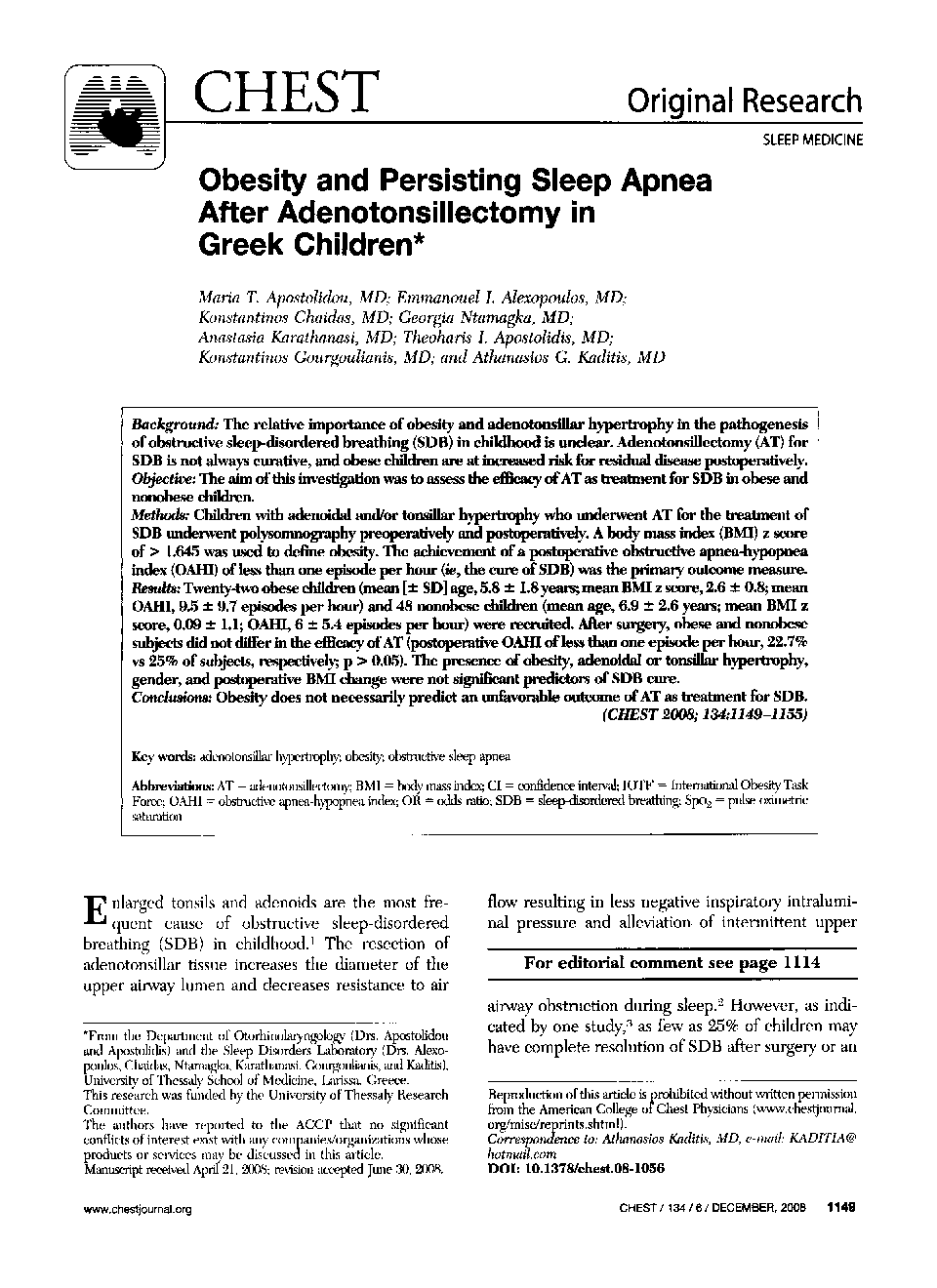| Article ID | Journal | Published Year | Pages | File Type |
|---|---|---|---|---|
| 2903560 | Chest | 2008 | 7 Pages |
BackgroundThe relative importance of obesity and adenotonsillar hypertrophy in the pathogenesis of obstructive sleep-disordered breathing (SDB) in childhood is unclear. Adenotonsillectomy (AT) for SDB is not always curative, and obese children are at increased risk for residual disease postoperatively.ObjectiveThe aim of this investigation was to assess the efficacy of AT as treatment for SDB in obese and nonobese children.MethodsChildren with adenoidal and/or tonsillar hypertrophy who underwent AT for the treatment of SDB underwent polysomnography preoperatively and postoperatively. A body mass index (BMI) z score of > 1.645 was used to define obesity. The achievement of a postoperative obstructive apnea-hypopnea index (OAHI) of less than one episode per hour (ie, the cure of SDB) was the primary outcome measure.ResultsTwenty-two obese children (mean [± SD] age, 5.8 ± 1.8 years; mean BMI z score, 2.6 ± 0.8; mean OAHI, 9.5 ± 9.7 episodes per hour) and 48 nonobese children (mean age, 6.9 ± 2.6 years; mean BMI z score, 0.09 ± 1.1; OAHI, 6 ± 5.4 episodes per hour) were recruited. After surgery, obese and nonobese subjects did not differ in the efficacy of AT (postoperative OAHI of less than one episode per hour, 22.7% vs 25% of subjects, respectively; p > 0.05). The presence of obesity, adenoidal or tonsillar hypertrophy, gender, and postoperative BMI change were not significant predictors of SDB cure.ConclusionsObesity does not necessarily predict an unfavorable outcome of AT as treatment for SDB.
